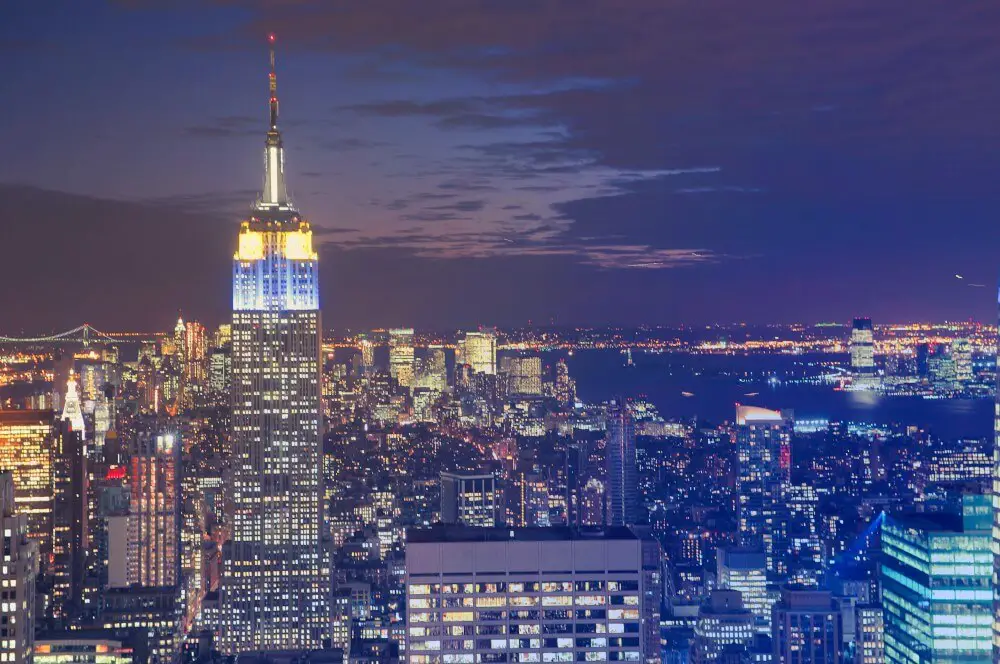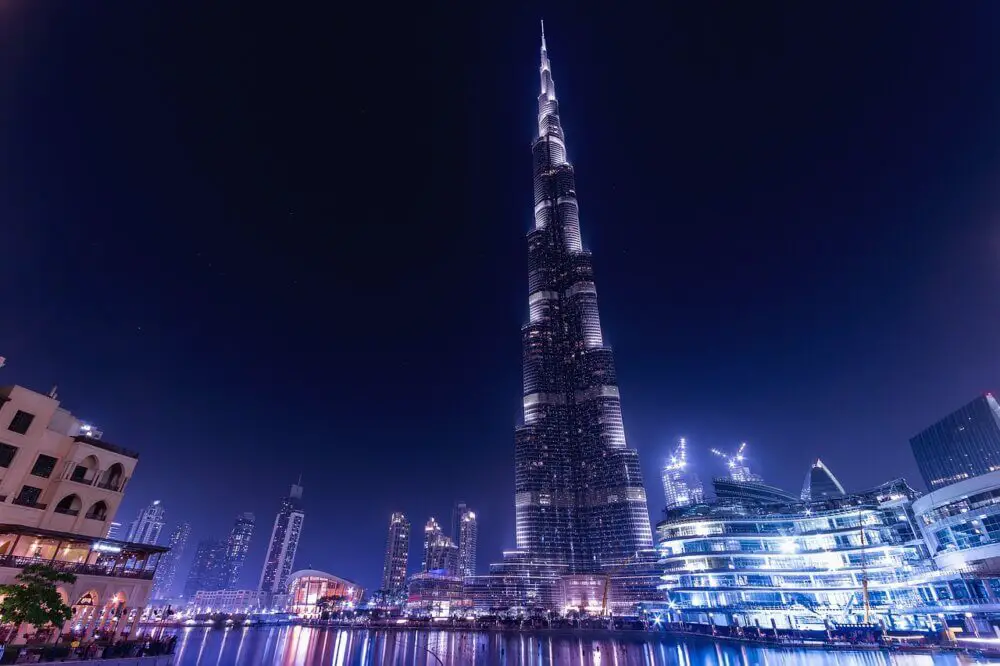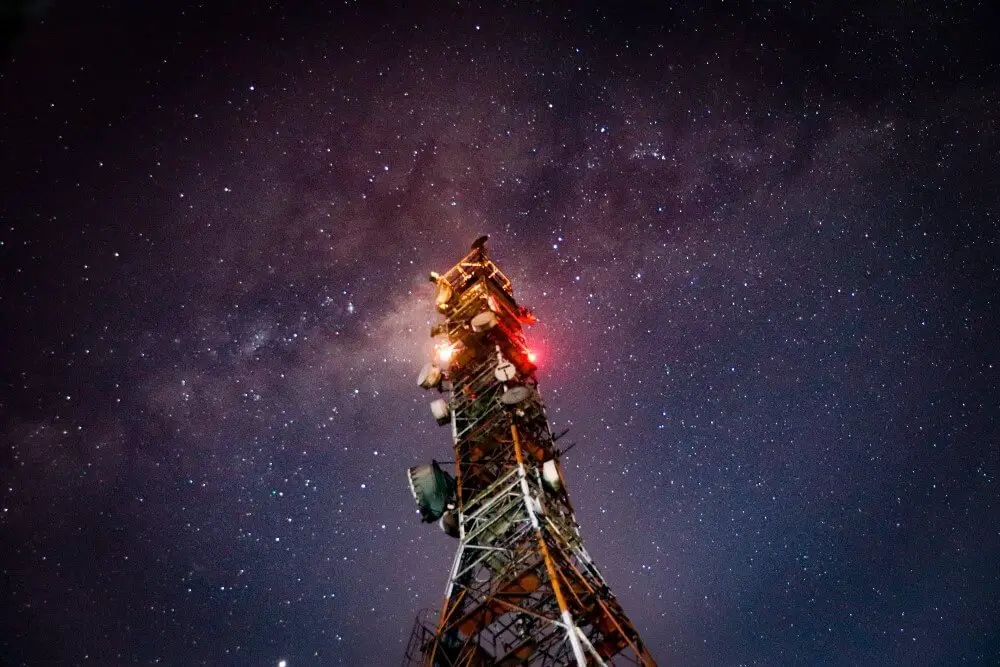When flying over or staring up at the tall buildings that make up a city at night, you may notice an array of twinkling flashes illuminating the tips of each structure. Upon closer inspection, you’ll have noticed that these are red lights, and are visible from a great distance.
These red lights are not there just to add to the aesthetics of the night time urban skyline. They perform important roles and, beyond that, have no doubt saved lives in the past.
So, with this in mind, let’s explore the question: why are there red lights on top of tall buildings?
Put simply, red lights are placed on top of tall buildings as a visible warning signal to pilots and navigators to avoid flying near the structures. As such, they are vital safety measures, and are often a compulsory addition to a tall building’s design. The colour red in particular is used as it is less likely to be affected by fog, smoke and other diffusion than other colours.
Read on to find out more about why red lights in particular are used on top of tall buildings, which buildings have red lights on top, and whether these lights can ever be turned off.
But first, let’s explore the reasons why there are red lights on top of tall buildings further:
Boosting Safety
The chief reason why lights are installed at the top of tall buildings is to increase safety for passengers and pilots of planes flying in and around urban areas.
Where there are buildings that are tall enough to potentially cause air traffic to need to avoid them, this aviation obstruction lighting acts as a warning beacon. Any pilots or navigators flying over a city will be able to tell where the tall buildings are from a great distance, sometimes many nautical miles away.
Of course, planes fly in all conditions, and as such these lights have to be effective in any situation. For this reason, the colour red is used mainly in urban areas as it is more visible in fog, smoke or through fine particles than any other colour.
Unfortunately, there have been past incidents that have necessitated the use of these lights. For instance, the Empire State Building aeroplane crash of 1945, which killed 14 people, was caused by fog causing the pilot to misjudge where the skyscraper was located.
With modern skyscrapers such as the Burj Khalifa now soaring thousands of feet up into the air, good visibility has never been more paramount.
Improving Communications
Another important reason that red lights are used on top of tall buildings is the improved communication that it enables for pilots and other aviators. It means that even at night they can identify where the tall buildings of a city are located.
Not only does this help to aid navigation and guide pilots to the right flight path, it also helps them to mark specific landmarks. This can prove helpful, if they are talking to ground control or to other air traffic.

Meeting Compliance Regulations
There’s no doubt that lights on top of skyscrapers are fundamentally vital for pilots to complete their jobs in all conditions. But it’s also up to architects and building planners to incorporate these red lights into their designs.
Typically, they don’t have much choice, as installing red lights on top of buildings that meet a certain height threshold is required by law. Authorities around the world view these lights as hugely important, and as such view them as essential to implement.
When doing this, red lights are usually only turned on at night, in a dual setting with white strobes that turn on during the day.
There are two types of strobe lights used on tall structures: medium-intensity and high-intensity. Medium-intensity strobes are typically installed on buildings between 200 and 500 feet, and a structure that’s taller than 500 feet must have a medium-intensity strobe. Meanwhile, high intensity strobes are used on structures taller than 700 feet (210 metres).
So, red lights play an enormous role in helping buildings meet current safety standards set by the relevant authorities. And, with these regulations being mandated across the globe, this ensures that tall buildings are safe no matter where they’re found.
But, now we know why lights at the top of buildings exist, and why they’re red, it’s worth asking why they flash.
Why do red lights on top of buildings flash?
The reason why lights flash on top of tall buildings is pretty simple: it’s a more visible signal than a static light would be. As such, flashing lights serve a visible contrast to the rest of the lights that surround the structures.
This is especially pertinent considering that there are a lot of steady lights that exist in an urban area. Flashing lights make them more distinguishable as an obstacle for pilots flying above an urban area at night, rendering it safer for everyone involved.
It’s also true that the universal symbol for warning lights across the world is typically a red flashing light. This further helps to highlight the structures in the night sky and warn aircraft well away.

Do all tall buildings still have red lights on top?
Although red lights on tall buildings are usually a given on such lofty structures, this isn’t always the case. Whether these lights are on top depends on a number of factors, such as what local regulations there are, and whether the building meets the specific height threshold.
While most countries have mandated requirements that lights should be put in place, there can be differences in the exact height threshold from region to region. Indeed, with advanced terrain mapping and geolocation, it may be the case that red lights are eventually no longer needed for the purpose of warning pilots about nearby tall buildings.
Can red lights on tall buildings be turned off?
There are certain circumstances where red lights on tall buildings can be turned off. Depending on the local regulations in place, this may be at certain times of the day, or when visibility is at its highest – usually, it’s a combination of both.
Like any piece of electrical equipment, these red lights also need maintenance and repair which may cause them to be turned off. However, due to the importance of the lights as warning signals, this work is usually done during the daylight hours to prevent them causing a safety hazard at night.
Wherever the tall building in question is located, it’s subject to all relevant aviation rules and requirements. These regulations are in place to ensure that there is the correct level of visibility and to prevent any potential hazards or confusion for pilots.

Are there any other colour lights that can be used on top of buildings?
Although the most common lights that are used on top of tall buildings are white and red, there are some other colours that can be used on top of such structures. These may include green or blue, although these can’t replace the strobe required by regulation.
For instance, green lights may be included on the rooftop of a building to signify an emergency exit, or light up landing zones for helicopters. Meanwhile, blue lights are also common, but these typically perform an aesthetic role rather than a functional one.
Just as with the type of light used, the colour is also dependent on regulatory standards being met, and compliance with these guidelines is a must to ensure safety.
That’s it for our guide on why there are red lights on top of tall buildings. Although they’re easy to miss from ground level, from the skies they are a crucial way of helping aircraft steer clear of ground obstacles.
And, if you want to learn more about air infrastructure, why not check out our article on why an airport is called an airport.
Or, if you’d like more definitions on building and architecture vocabulary, take a look at our range of building wikis.
Last Updated on 1 June 2023 by Michael
